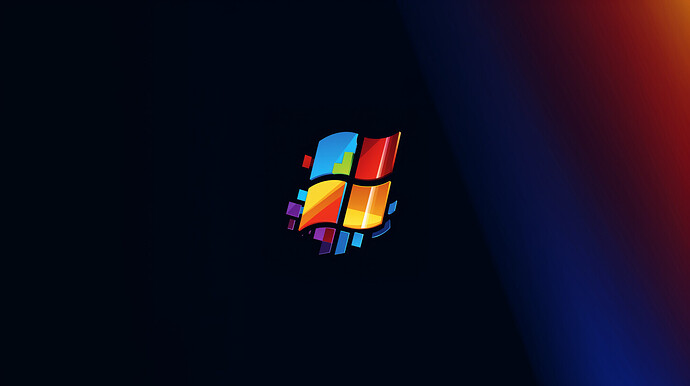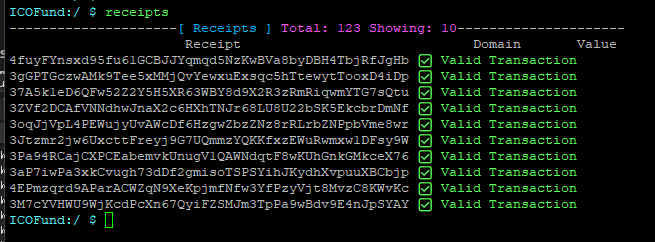GRIDNET Core 1.4.1 Release Notes
Download URL: https://gridnet.org/GRIDNETCore.zip
1. Accountability of Transactions:
-
New Utility ‘Receipts’: Users can access transaction receipts specific to accounts. This feature bridges the transparency gap and ensures clear transaction history visualization. It’s designed to be executed from the state domain where the initial commands were performed.
-
Enhanced Transaction Utility: The system now offers detailed outputs for transaction processing through the ‘transactions’ utility. Depending on the user’s needs, it can be invoked from either the target or source State-Domain, offering flexibility in tracking transactions.
2. Memory Management Improvements:
-
Buffer Memory Allocation: Significant modifications were made to memory allocation, particularly limiting large buffer memory to only those UDT connections actively partaking in synchronization.
-
Efficient Task Management: The system now swiftly clears the queue of pending tasks immediately after a connection terminates, preventing lingering processes from occupying memory.
-
Memory Reservations: To ensure efficient memory usage, tweaks were made to the amounts of memory reserved, optimizing resource utilization.
3. Synchronization and Bootstrap Mechanisms:
-
Full-resynchronization Procedure: Previously, an issue existed which didn’t reset the cached proof of work difficulty related to the Verified Chain Proof. This has now been fixed, ensuring proper synchronization from the very first Genesis Block. Not that this can be forced manually at any moment by issuing the ‘resync’ command.
-
Deferred Cold Storage Synchronization: An optimization mechanism introduced faced an overwriting issue during the bootstrap phase. This issue, which interfered with the Heaviest Chain Proof, has been addressed, guaranteeing smooth initial bootstrapping sequences.
4. Data Transfer and Protocol Improvements:
-
Onboard Intelligence for Data Downloads: With enhanced algorithms, both ends of a communication can now make precise decisions about data transfer sizes and frequency. This is particularly valuable when transferring sizable datasets.
-
UDT-based Sub-Protocol Development: An upcoming addition, this protocol, specifically designed for the exchange of large data files, ensures chunk-level data integrity. Its introduction is a leap towards the efficient handling and transfer of massive datasets.
5. Security Enhancements:
-
Network Eclipsing Attacks: - we have made GRIDNET Core way more robust against data withholding attacks.
-
Data Withholding Attacks: - we have incorporated several measures which prevent nodes against network eclipsing attacks. In particular we have made sure that during the initial Bootstrap sequence ‘official’ bootstrap nodes are prioritized for data deliveries, at least for a brief while.
-
Protection Against Cross-Version Attacks: Strengthening security, the system now boasts improved defenses against potential attacks stemming from different software versions. In particular we have made the system resilient against an attack vector in which the attacker would use prior version of GRIDNET Core to mine-key blocks thus gaining rewards while being unable to confirm code bundles due to differences in processing and thus effectively DOSing the network as a result as transactions wouldn’t be processed.
-
Protection Against Known Attacks: With the help of community inputs, we fortified the system against certain attacks that could exploit previous versions of GRIDNET Core. The protective measures ensure that block production and transaction confirmations are immune to such exploitative endeavors.
-
Enhanced Anti-DOS Mechanisms: We’ve beefed up the embedded firewall subsystem, especially focused around the WebSocket protocol, to counter potential Denial of Service (DOS) attacks more effectively.
-
Chain-Proof Processing: The algorithms related to chain-proof processing underwent significant enhancements, making them more robust. In particular we have strengthened the systema against timestamp manipulation attacks.
-
Bootstrap Sequence Improvements: Data integrity checks during the initial bootstrap sequence have been refined. This includes better handling of data integrity errors and more accurate checkpoint processing.
6. User Interface and Functional Additions:
-
Revised Status-Bar Mechanics: The local Operator’s view is now free from any influence of Decentralized Terminal Interface Sessions, ensuring a consistent user experience.
-
Chain-Proofs Support: The system now offers more flexible checkpoint activations, based on already achieved heights, especially for the Verified Chain Proof.
-
New Dials for Enhanced Monitoring: A set of newly introduced dials offer real-time insights into various operations, from block mining to transaction processing. This enhancement drastically improves transparency and monitoring.

7. Bug Fixes and Refinements:
- A series of bugs, ranging from consensus resolution issues to incorrect status bar displays, have been identified and resolved. This ensures a smoother and more reliable GRIDNET Core experience.
8. Enhancements to Decentralization and Network Resilience:
-
Decoupling of Checkpoint Processing: Internal data structures, namely the Verified and Heaviest Chain Proofs, are now treated distinctively from network-received chain-proofs. Checkpoints for the latter are initialized as per individual requests, ensuring more responsive and streamlined handling.
-
Leadership Transparency: The “whoamI” function now transparently informs if the local Operator is currently a leader, ensuring clarity about the current network dynamics.

9. User Interface and Data Monitoring:
-
Enhanced Dials: Several new dials were added for enhanced monitoring and reporting. This includes tracking the number of mined blocks, current earnings, transactions processed by the node, and globally processed transactions. Such additions bolster transparency and allow Operators to stay updated about their performance and the overall network status.
-
Improved Scheduling of Status Bars: The status bars have been enhanced to provide accurate, real-time data without interference. Pending tweaks remain for the DTIs to match this enhancement.
10. Fixes & Stability Improvements:
-
Bug Fixes: Several critical bugs were addressed. These included issues where GRIDNET Core could unexpectedly shut down upon processing specific block types, issues with the ‘setperspective’ GridScript command which could lead to crashes, and edge-case scenarios where certain chain-proofs were wrongly marked as invalid.
-
Feedback-based Adjustments: Following constructive feedback from our community members, especially from ‘Daddy’, we’ve incorporated key changes. One significant tweak was ensuring that the system remains resilient against adversarial entities trying to mine on alternate event histories.
This wraps up the comprehensive release notes for GRIDNET Core 1.4.1. Please note that while we have elaborated upon all the points shared, we’ve aimed for clarity and brevity. Further detailed technical discussions on each change can be explored upon request. Our team at GRIDNET Core is committed to continuous improvement. The 1.4.1 release is a testament to our dedication, incorporating community feedback, and our vision for a secure, transparent, and efficient decentralized platform. We greatly appreciate the community’s continuous support, understanding, and patience as we push the boundaries of what’s possible with decentralized systems.


